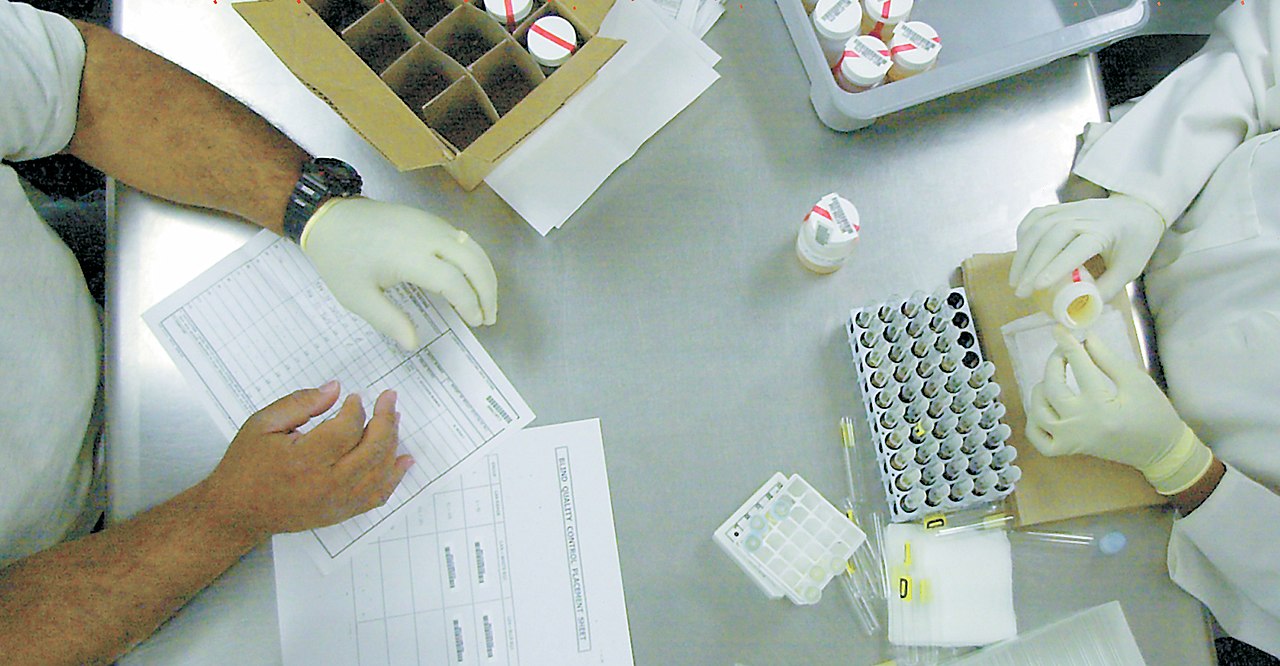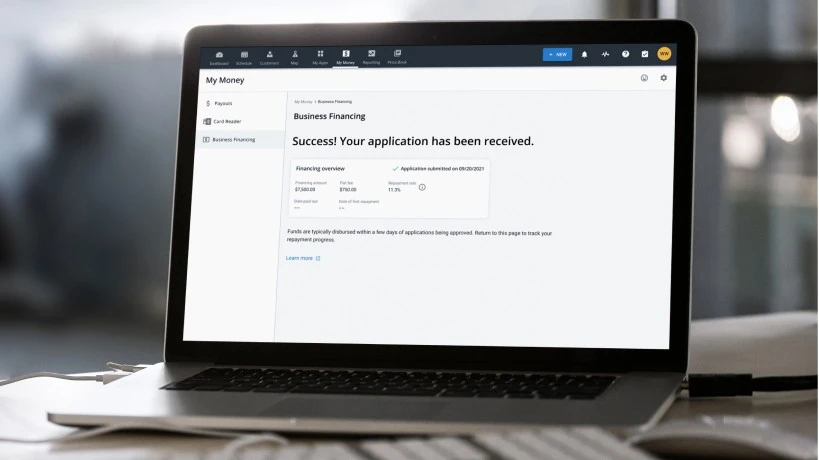
From opioids to marijuana, recreational drug use is on the rise. According to a recent study by the National Institute on Drug Abuse, companies in the United States lose over $740 billion each year in substance-abuse related costs. This loss is related to healthcare costs, criminal activities, and diminished work productivity.
Why you should consider a drug testing policy
As an employer in the home services industry, it is your duty to keep drugs away from your workplace. Not only does drug-use affect employee morale, it contributes to an unsafe work environment. Here’s why you should consider implementing a drug testing program at your company.
Employee substance abuse may not be easy to spot. More than 10 million users of illegal drugs are employed. This statistic suggests that millions of employees are good at hiding their drug use.
Drug-use impacts workers’ compensation benefits. Depending on your state’s laws, your company has the right to dispute workers’ compensation payments if drug-use contributed to the accidents.
Testing for drugs promotes a safety-sensitive workplace. Substance abuse contributes to theft, violence, and workplace accidents. These incidents compromise the safety of employees and customers. Drug testing shows your employees that you are serious about protecting their safety.
Drug testing is a deterrent that makes employees think twice about using drugs. If employees know that they will lose their jobs if they fail a drug test, they will resist the temptation to use drugs. This is especially true if you implement a random drug testing policy.
When you should implement drug testing
Your organization’s testing policies must be compliant with state, federal, and/or union regulations. You’ll also want to provide adequate training for employees to learn how to drug test employees. Components of a good training program include:
- An overview of your organization’s drug testing policy
- Record-keeping protocol
- How to implement random drug testing
- Employee confidentiality
- The importance of pre-employment testing
- Details about problems that are likely to occur
- How to notify employees about the results
Many organizations hire a third-party company to implement their drug testing programs. If you decide to outsource your program, be sure to learn about the third-party company’s policies and practices. Hire a company that understands how to drug test employees, according to state and federal guidelines.
It’s not uncommon for companies to test their employees before they are hired and at random times during the year. For drug testing to be effective, the employees in your organization must implement the program consistently..
Pre-employment drug testing: You can provide conditional offers of employment contingent on applicants passing drug tests. If an applicant fails the test, you have the right to rescind the offer.
Random drug testing: Typically, employers administer at least one random drug test per employee each year. It is critical that random drug tests are administered without warnings. Employees should be tested immediately after they are notified. Allowing them to leave the premises before the test is counterproductive.
Reasonable suspicion: If you believe an employee is using drugs, administer a drug test as soon as possible. Common signs of drug use include difficulty staying awake, attendance problems, stealing, and unsteady movements.
Types of panel drug testing
There are different types of panel drug tests. The most common types are 4 panel drug tests, 7 panel drug tests, and 10 panel drug tests.
Panels are the number of drugs that are screened by the test. For instance, a 4 panel drug test may include cocaine, Ecstasy, methadone, and PCP. Typically, the types of drug tests should be consistent with an organization’s drug testing policy, state law requirements, corporate culture, and profession.
During a drug test, organizations collect hair test, urine test, and oral fluids from employees. These samples are analyzed for the presence of a variety of drugs.
- Hair drug testing: This method detects drug use that occurred up to 90 days before the test. Hair drug testing is commonly used to test for marijuana, cocaine, PCP, methamphetamines, opioids, and amphetamines. It takes a week to receive the results.
- Urinalysis: This method detects drug use that occurred up to a week before the test. A urinalysis detects the presence of amphetamines, barbiturates, marijuana, cocaine, PCP, methadone, and methamphetamines. It takes a week to receive the results.
- Oral fluids: This method detects drug use up to 24 hours before the test. An oral fluids test detects PCP, opiates, cocaine, ethyl alcohol, THC, barbiturates, amphetamines, and methamphetamines. It takes 10 minutes to get the results.
For the best results, all samples should be sent to a laboratory. Hair drug tests offer a greater level of accuracy than urine and saliva tests. Urine samples are adversely affected by storage temperatures. Saliva tests are accurate; however, the saliva is only valid for a short period of time.
Types of drugs detected and how long they last
Amphetamine is a category of drugs that includes methamphetamines, Speed, and Ecstacy. These drugs remain in:
- Saliva for 24 to 48 hours
- Urine for up to 4 days
- Hair for up to 90 days
THC includes cannabinoids, marijuana, and hash. These drugs can be:
- Detected by a urine test for up to 45 days
- Detected by a hair follicle test for up to 90 days
- Detected by a blood test for up to 75 days
- Detected by a saliva test for up to 24 hours
Cocaine is commonly known as coke and crack. These drugs can be:
- Detected by a hair follicle test for up to 90 days
- Detected by a urine test for 2 to 4 days
- Detected by a saliva test for approximately 2 hours
Habitual cocaine users usually have detectable amounts of the drug in their systems for a longer period of time. For frequent users, the drug remains in the system for 14 days.
Opiates include heroin, opium, codeine, and morphine. Opiates remain in the system for a short period of time. The detection of opiates depends on body fat content, age, drug quality, amount of water in the body, weight, and metabolic rate. Opiates can be:
- Detected by a urine test for up to 7 days
- Detected by a blood test for up to 6 hours
- Detected by a hair follicle test for up to 90 days
Phencyclidine is a category of drugs that includes PCP and Angel Dust. Phencyclidine can be:
- Detected by a urine test for up to 30 days
- Detected by a saliva sample for up to 2 days
- Detected by a hair test for up to 90 days
Barbiturates include Phenobarbital, Butalbital, Secobarbital, and downers. Barbiturates can be:
- Detected by a urine test for up to 6 weeks
- Detected by a blood test for 72 hours
- Detected by a hair follicle test for up to 90 days
Methadone is an opioid and narcotic. Methadone can be:
- Detected by urine tests for up to 2 weeks
- Detected by hair tests for up to 90 days
- Detected by saliva tests for a few days after it was last ingested
To prevent alcohol abuse in the workspace, alcohol testing might be used on employees. Alcohol can be:
- Detected in the urine for a maximum of 80 hours
- Detected in hair follicles for up to 90 days
- Detected by a blood test for up to 24 hours
- Detected by a saliva test for a few hours
Hallucinogens include LSD, mushrooms, and Peyote. Hallucinogens can be:
- Detected by a urine test for 2 to 4 days
- Detected by a hair test for up to 90 days
- Detected by a blood test for up to 12 hours
Prescription drugs
include Valium, Librium, and Xanax. These types of drugs are benzodiazepines. They can be:
- Detected by saliva tests for up to 5 days
- Detected by urine tests for up to 10 days
- Detected by hair tests for up to 90 days
(Image credit to: commons.wikimedia.org)
Drug testing laws
Drug testing laws vary by state. However, many states have the right to test their employees for drugs. Employers can only test an applicant after a position is offered. Organizations must notify employees and applicants that drug testing is a condition of employment.
A U.S. Supreme Court decision ruled that hair, blood, urine, and saliva tests are not intrusive to employees or job applicants. However, the tests must be conducted in a private environment. A person of the same sex as the employee is authorized to monitor the procedure.
The Drug-Free Workplace Act of 1988® governs the drug policies of organizations that receive federal contracts or grants. These organizations must make every effort to maintain drug-free workplaces. If not, the organizations could lose their funding. Employers can implement workplace drug testing policies to ensure compliance with this legislation.
Federal agencies are required to use Substance Abuse Mental Health Services Administration (SAMHSA) certified labs. These labs employ Medical Review Officers. They are licensed physicians who evaluate the results of medical drug tests. Medical Review Officers ensure the integrity and accuracy of workplace drug tests.
Regardless of the federal and state laws, organizations are required to administer uniform drug testing policies. It is illegal for your organization to test certain employees but not others. Your testing policy can’t be based on an employee’s personal characteristics, such as looks, educational background, and demeanor.
In many states, there are regulations that stipulate the types of drug screenings employers are authorized to administer. Be sure to check with your state’s labor department before you implement a testing policy in your organization.
Some states protect employees who have a valid prescription for medical marijuana. However, prescriptions don’t give employees a license to come to work under the influence of marijuana. It’s important for you to get acquainted with your state’s medical marijuana laws.
Communicate the policy in the employee handbook
An organization’s drug testing policy shouldn’t come as a surprise to employees. Your organization’s employee handbook must include when and how employees will be tested, consequences for drug use (on the job or during recreational time), substance abuse program procedures (if applicable), and types of drug tests.
Your Human Resources department must have access to updated drug testing laws and policies. Best practices for how to drug test employees include:
- Communicate the organization’s drug testing policies to everyone employed by the organization.
- Create written policies that are easily accessible to stakeholders.
- Keep all drug test results confidential.
- Define the types of drugs that are tested.
- List the consequences for refusing a company drug test.
As an employer, you have the legal authority to establish fair and uniform drug policies in your workplace. You can prohibit the use of drugs at work, conduct random/reasonable cause drug test procedures, and terminate employees who bring alcohol/drugs to the workplace.
Workplace drug policies should be easy for every person to understand. Remember to post the workplace drug policy in several areas throughout your organization.







